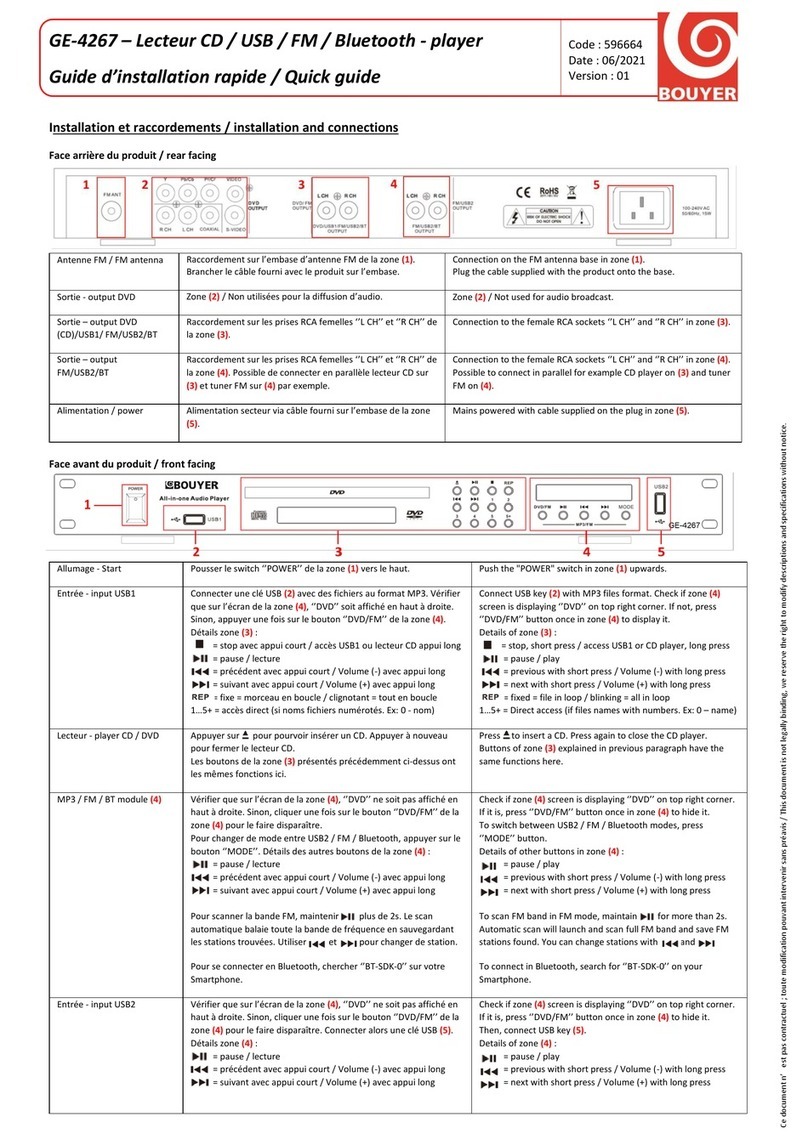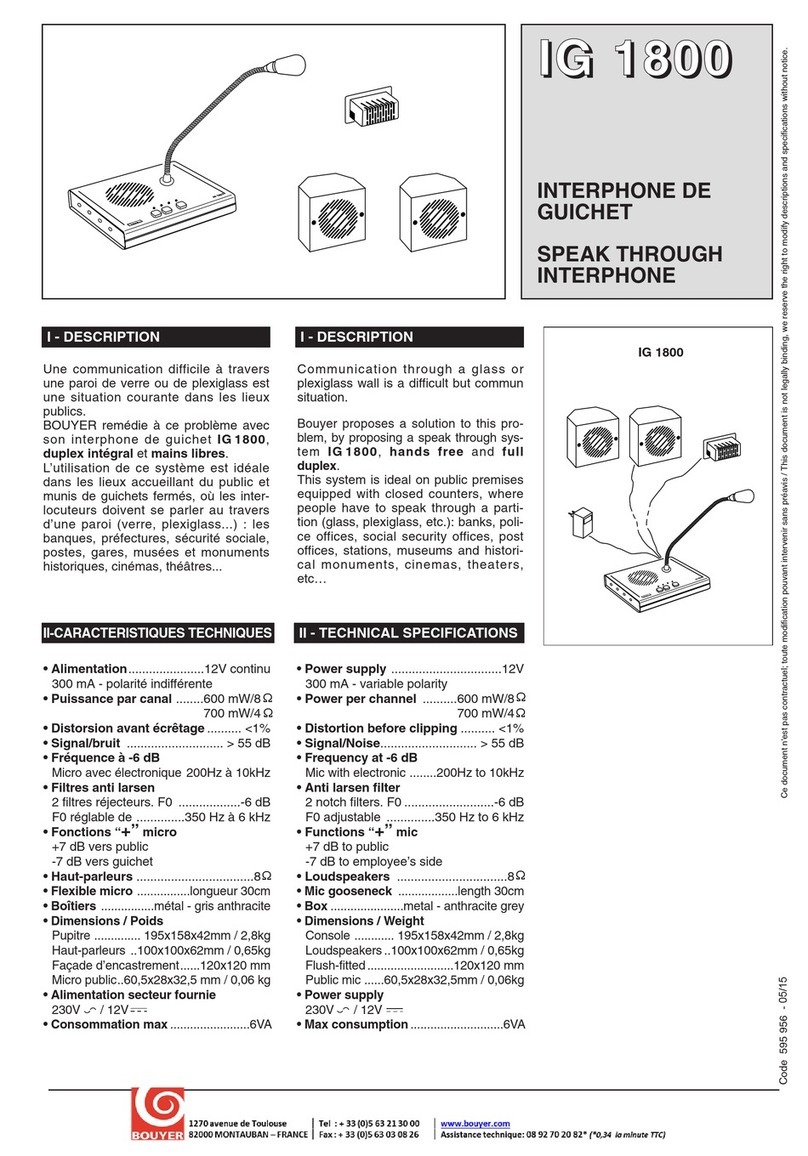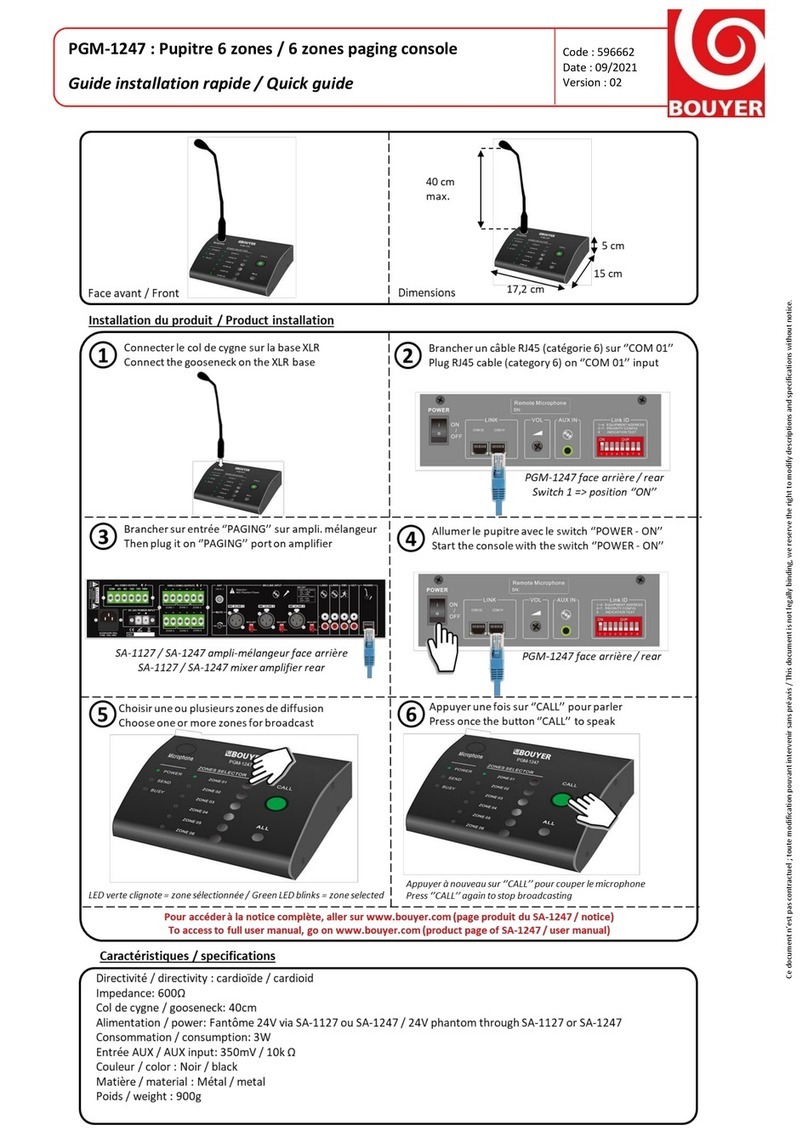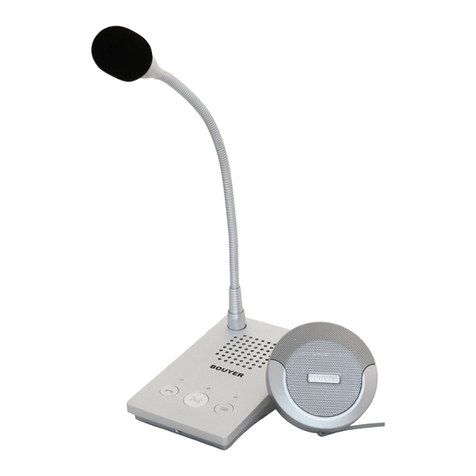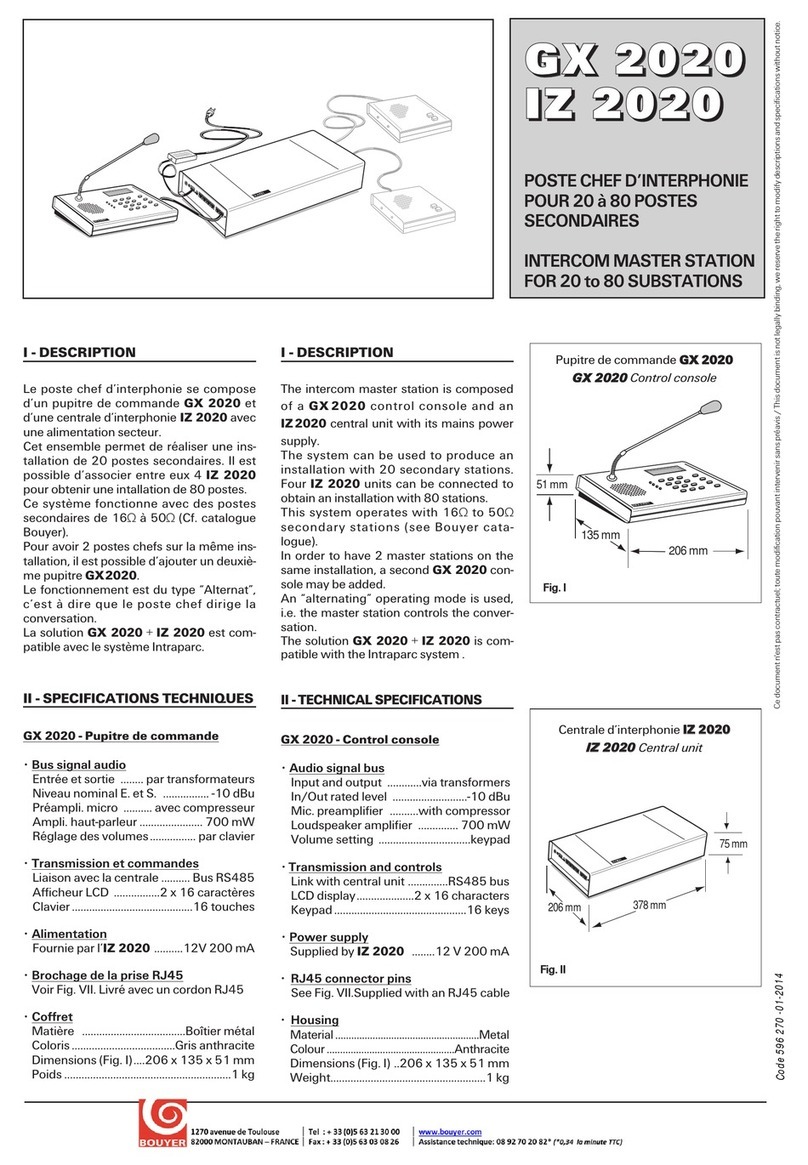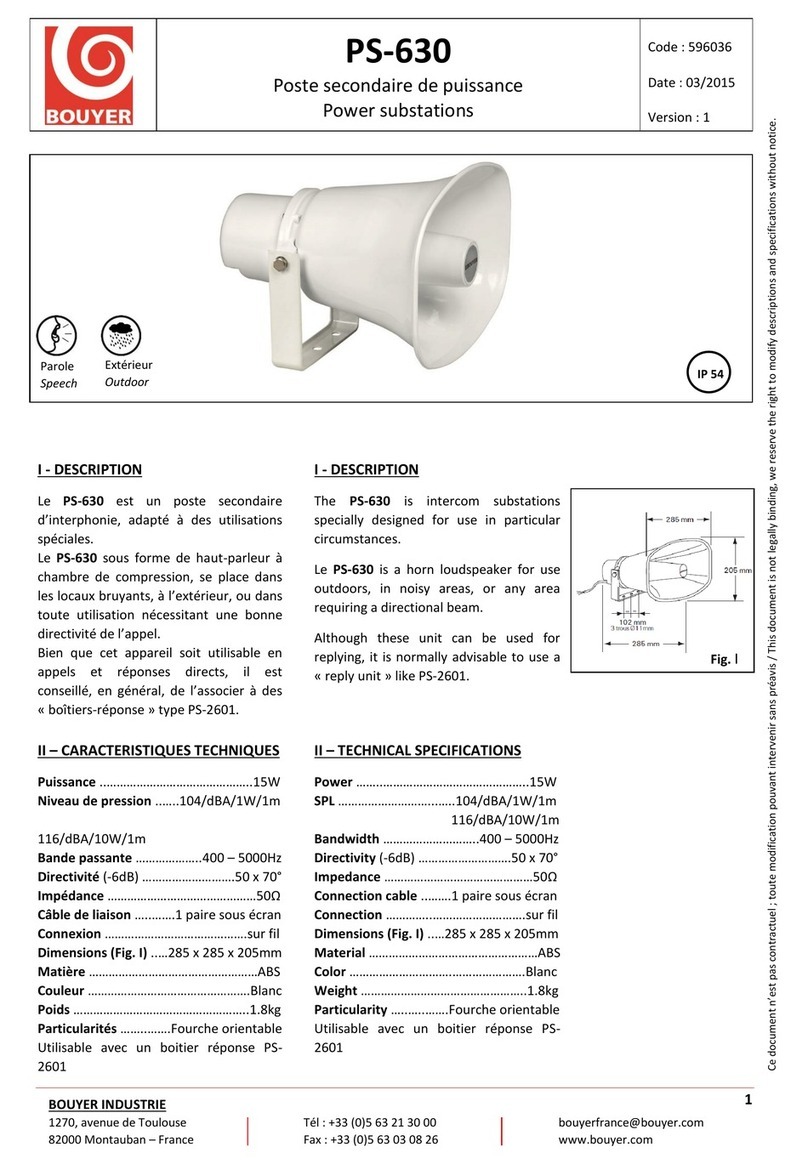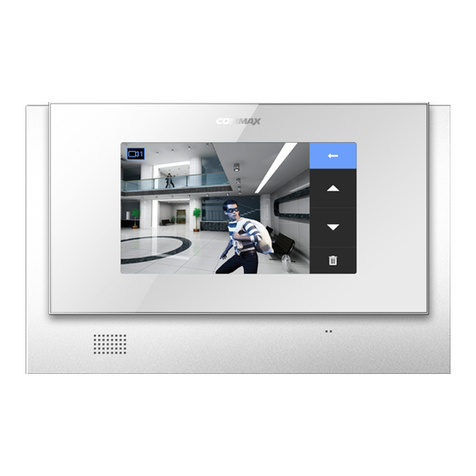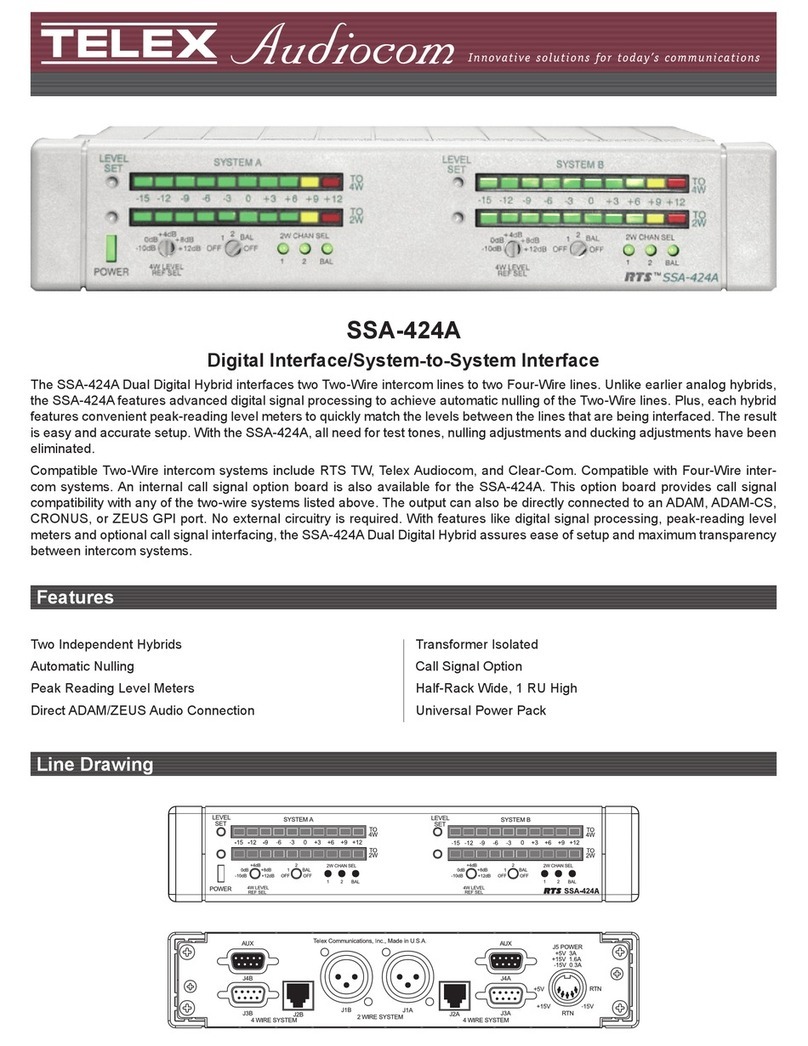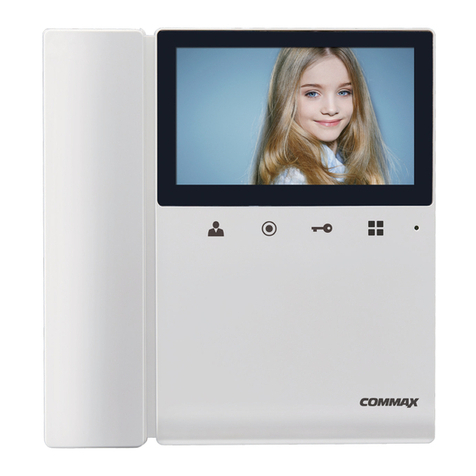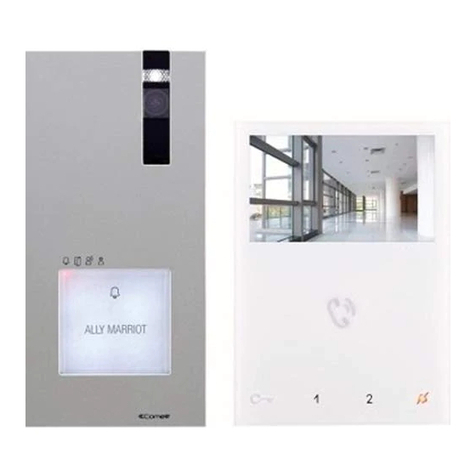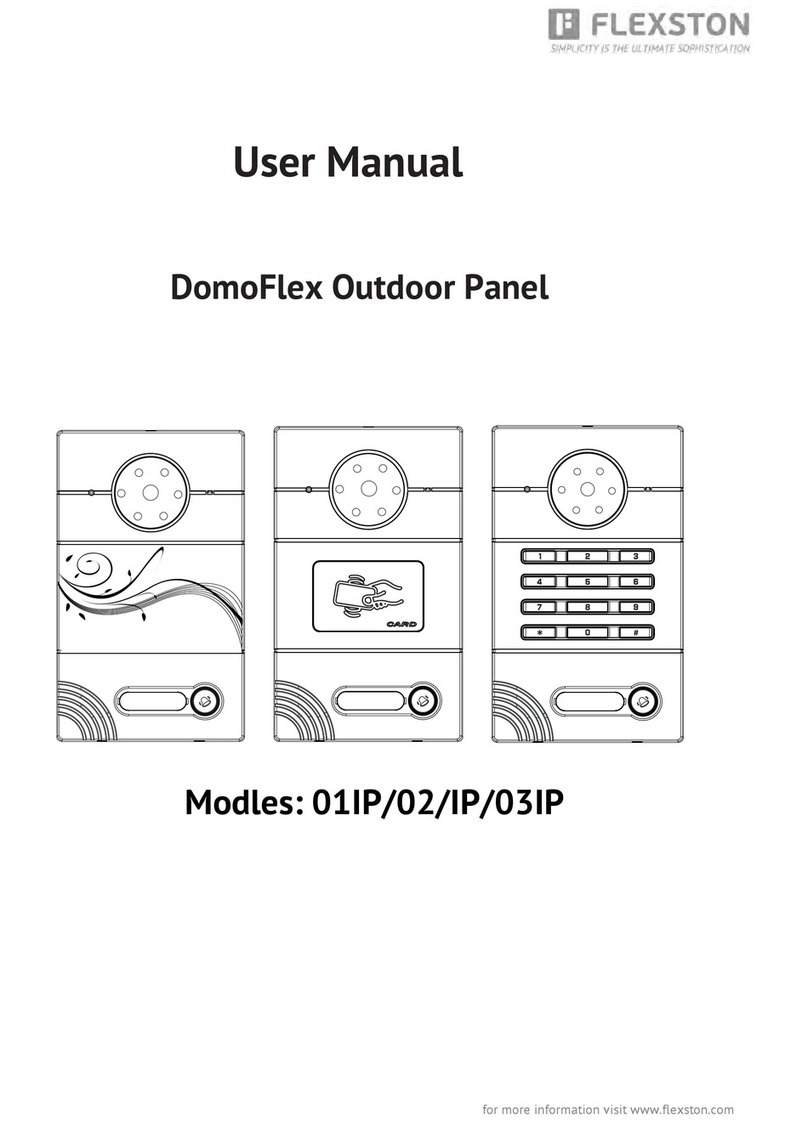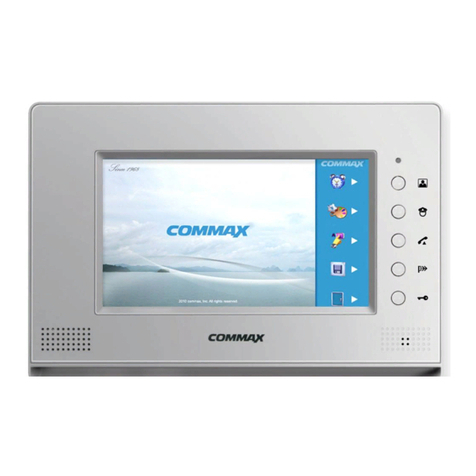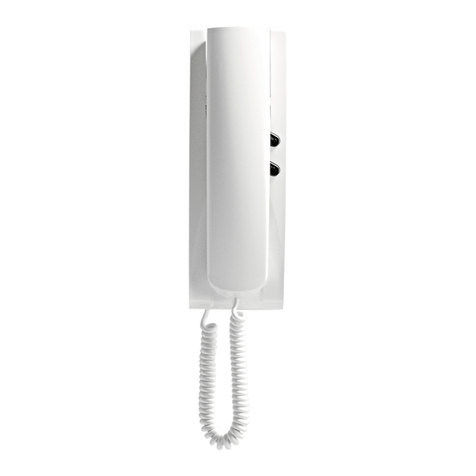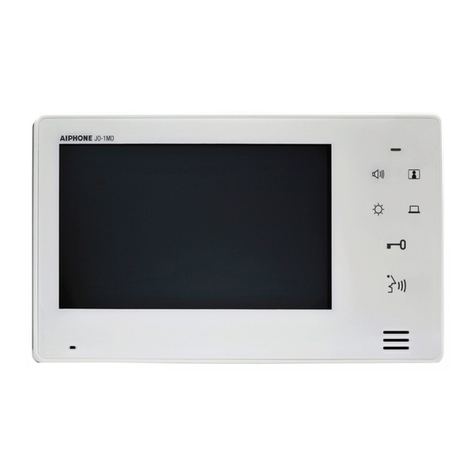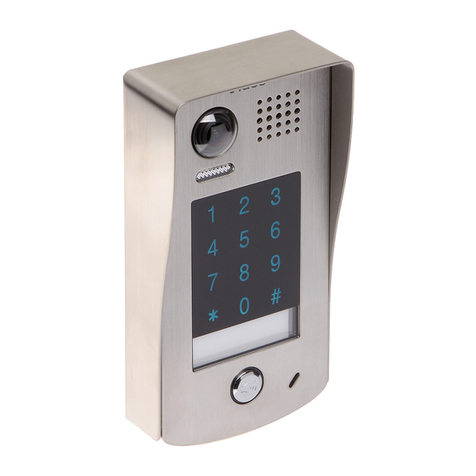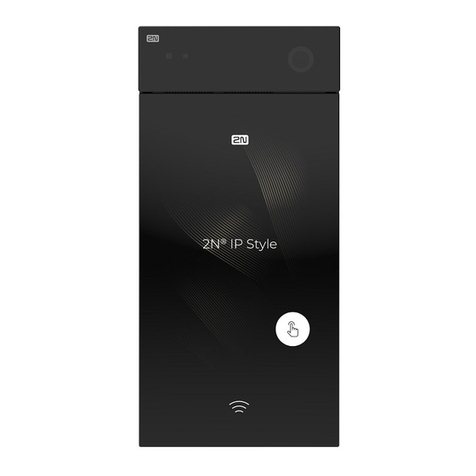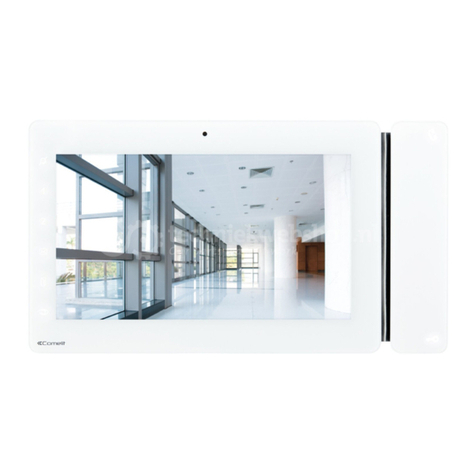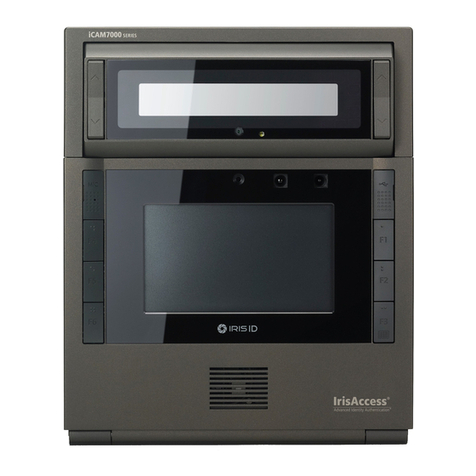Bouyer PC 1106 User manual

Les PC 1106 et PC 1112 sont des inter-
phones de puissance destinés à des appli-
cations industrielles (usines, bateaux,
garages, entrepôts...).
Une large gamme de postes secondaires
permet de répondre aux besoins de la
majorité des secteurs d' activité.
Un microphone "paume de main", livré
avec l'appareil, permet l'utilisation en
milieu bruyant.
L'alimentation 12 à 48 V continu ou 230 V
50 Hz en option, rendent ces appareils très
polyvalents.
• Puissance de l’amplificateur
- 15 W sur secondaire 16 Ω
- 5 W sur secondaire 50 Ω
- 6 W en poste-chef
• Impédance de ligne ..........16 Ω (ou 50 Ω)
• Impédance max. de ligne ..............100 Ω
(limité par l’appel sonore et lumineux)
• Alimentation................12V à 48V continu
(sans commutation), + ou -à la masse.
• Consommation
- au repos ..........................................100 m A
- en utilisation ......2,4 A avec un secondaire
3,2 A maximum
• Dimensions ............322 x 172 x 170 mm
• Poids ( avec microphone)
PC 1106 .............................................. 3,7 kg
PC 1112.............................................. 3,9 kg
• Particularité
Les PC 1106 et PC 1112 peuvent être
alimentés depuis le secteur 230 V avec
une alimentation extérieure PZ 12,
livrable séparément en option.
POSTES CHEFFS DE
PUISSANCE 6 ET 12
DIRECTIONS
6 AND 12-WAY
HIGH POWER
MASTER STATIONS
Ce document n'est pas contractuel; toute modification pouvant intervenir sans préavis / This document is not legally binding, we reserve the right to modify descriptions and specifications without notice.
Code 595 815 - 05/2004
I - DESCRIPTION I - DESCRIPTION
P
PC
C
1
11
10
06
6
P
PC
C
1
11
11
12
2
The PC 1106 and PC 1112 are high
power intercom units intended for indus-
trial use (factories, boats, garages, ware-
houses...).
A complete range of substations is avai-
lable to satisfy the requirements of most
situations.
A fist microphone is supplied with the unit
for use in noisy areas.
With either 12 - 48 DC as standard, or
using an optionnal mains AC power sup-
ply, these units serve a wid variety of pur-
poses.
• Output power
- 15 W call at 16 Ω
- 5 W at 50 Ω
- 6 W receive
• Line impedance ................16 Ω (or 50 Ω)
• Maximum line impedance............100 Ω
• Power supply ........................12 - 48 V DC
(unswitched), positive or negative earth.
• Consumption :
- stand-by..........................................100 mA
- in use ..............2,4 A with one substation
3,2 A maximum
• Dimensions .......... 322 x 172 x 170 mm
• Weight (incl. microphone)
PC 1106 .............................................. 3.7 kg
PC 1112 .............................................. 3.9 kg
• Feature
Both the PC 1106 and PC 1112 can be
mains (230 V) powered using separate
optional power supply PZ 12.
PC 1106
PC 1112
II - CARACTÉRISTIQUES TECHNIQUES II - TECHNICAL SPECIFICATIONS
480 avenue de Paris • 82000 MONTAUBAN • FRANCE
Tél : 33 (0)8 92 70 20 82* (*0,34 €la minute TTC) • Fax : 33 (0)5 63 03 08 26 • http://www.bouyer.com

2PC 1106 - PC 1112
III - PRESENTATION III - PRESENTATION
Face avant (Fig. I)
1 Interrupteur Marche/Arrêt et voyant lumineux
2 Touche “Parole / Ecoute”
Réglage de niveau de sonnerie( par tournevis)
Bouton d’appel par sonnerie
Touches de prise de ligne (6 ou 12)
3 Voyants d’appel ( 6 ou 12)
4 Etiquettes d’identification de lignes
5 Orifices pour dégagement des étiquettes
6 Vis de fixation du support microphone
Support de microphone amovible
Jack (6,35 mm) du microphone extérieur
7 Mise en service du microphone "paume de main"
Réglage de volume “Parole”
Réglage de volume “Ecoute”
Face arrière (Fig. II)
15 Connecteurs postes secondaires
Connecteur alimentation et microphone
16 Serre-câbles
Verrouillage des connecteurs
18 Bride de fixation
Front panel (Fig. I)
ON/OFF switch with indicator lamp
Talk/listen button
Tone volume control (by screwdriver)
Tone call button
Channel selectors (6 or 12)
Incomming call indicator lamps (6 or 12)
Channel identification labels
Label removal slots
Fixing screw for microphone support
Detachable microphone support
Jack socket (6,35 mm) for external microphone
Fist microphone switch
Speech volume control
Listen volume control
Rear panel (Fig. II)
15 Substation line connectors
Microphone and power supply connector
Cable grip
Connector retaining clips
18 Fixing bracket
1
2
10
11
12
13
14
3
4
5
6
7
8
9
1
ON
1
2
3
4
5
6
PC 1106
2 43 5 76
89
1011
12
13
14
15 16 17
18
19
100 mm 100 mm
3trousØ5,2mm
IV - INSTALLATION IV - INSTALLATION
• MISE EN PLACE
Le coffret peut être soit encastré (Fig.III), soit fixé avec la
fourche orientable (Fig. II).
Les PC 1106 et PC 1112 sont livrés avec un support de
microphone qui peut, au choix, être fixé sur une paroi ou
sur l'appareil par la vis (Fig.I).
• BRANCHEMENTS
Desserrer d’un demi-tour les vis sur les pièces de maintien
(Fig. II) et dégager les connecteurs.
Relier chaque poste secondaire à une des paires de plots du
bornier, numérotées de L1 à L12 (Fig. II). Voir section des fils
préconisés (Tableau Fig. V)
Si l’environnement est fortement parasité, utiliser un câble
blindé, blindage relié à , bornier .
L’alimentation continue (12V à 48V) est raccordée aux
bornes + et -indiquées sur la batterie (Fig. IV).
Le microphone peut être branché en face avant sur la prise
jack 9 ou à l' arrière sur le bornier (Fig. IV).
Replacer les connecteurs conformément au repérage des éti-
quettes puis les immobiliser avec les pièces de maintien 19
Afin d'éviter l’arrachement des fils, les maintenir avec le serre-
câble .
• FITTING
The unit may be either flush mounted or fixed by its tilting
bracket (Fig. II and Fig. III).
The PC 1106 and PC 1112 are supplied with a microphone
support 11 which can either be crewed to a board or fixed to
the unit using screw 12 (Fig.I).
• CONNECTIONS
Loosen the connector retaining clip screws 19 (Fig. II)
by half a
turn and remove the connectors.
Connect each substation to one of the pairs of
terminals numbe-
red L1 to L12 (Fig. II). See recommended cable diameters
(Fig.V).
In interference is likely use screened cable connecting the
screen to on terminal strip .
The DC power supply (12 V to 48 V) is connected to the + and
- terminals indicated on terminal strip 15 .
The microphone can be connected either to the jack socket 9
on the front panel or on terminal strip on the rear panel
(Fig.IV).
Replace the connectors as indicated on the labels and then
secure them using the connector retaining clip 19 . In order to
avoid tugging the cable, secure using cable grip 17 .
15
16
17
18
19
11
9
10
16
16
17
18
18
Fig. I Fig. II
1
2
10
11
12
13
14
3
4
5
6
7
8
9
15
16
17
18
19
11
9
10
16
16
16
17
18
18

Télécommande (rouge) / Remote control (red)
Moudulation (jaune/yellow)
0 (Blindage / Screen)
Jack 6,35 stéréo
MICRO
Télé Mod
MICRO
Télé Mod
PC 1106 - PC 1112 3
• CHOIX DES POSTES SECONDAIRES
Suivant le niveau sonore requis, choisir
les postes secondaires correspondants
aux conditions d'utilisation (Voir
Fig.VII).
Pour les lignes secondaires équipées d’un
haut-parleur 16 Ω , utiliser un bouton
poussoir d’appel et insérer dans la ligne 2
condensateurs
électrolytiques, en posi-
tion tête-bêche (Fig. VI).
Pour une
conversation discrète avec le
poste chef, utiliser
un boîtier réponse
PS901.
Dans ce cas, couper le strap à
côté du bornier de raccordement du
PS901.
Dans les locaux très bruyants, le casque
PZ 10 (option) permet la meilleure isola-
tion contre le bruit. Le PZ 10 se branche
au PS 901.
• SELECTION OF SUBSTATIONS
According to the ambient noise level or
the area to be covered choose a sui-
table substation (see Fig. VII).
When using 16 Ω loudspeaker substa-
tions, use either a call button and insert
on the line two electrolytic capacitors
side by side (Fig VI).
To ensure discreet communication with
the master station, use a reply unit
PS901. In this case, cut the strap besi-
de the PS 901 connection strip.
In areas with excessive noise, optionnal
headset PZ 10 provides better isolation
from external noise. The PZ 10 is connec-
ted to the PS 901.
308,5
102
4 trous Ø ≤8
Découpe pour encastrement :
297 x 157 mm
Fig. III
Fig. IV
Longueur Postes Postes
de la ligne secondaires secondaires
16 Ω 50 Ω
Cable length Substations Substations
50 m 0,5 mm20,2 mm2
100 m 1 mm20,5 mm2
250 m 2,5 mm21 mm2
500 m ---------- 2,5 mm2
PC1106
ou
PC 1112
HP
16Ω
47 µF 100 µF
Fig. VI
Fig. V
V - UTILISATION V - USE
Mettre le poste chef sous tension 1 (Fig. I).
• POUR APPELER UN POSTE SECONDAIRE
Enfoncer la touche de ligne 5 , et parler en pressant la touche
“Parole/Ecoute” 2 , la relâcher pour écouter. Les niveaux de
volume “Parole” et “Ecoute” sont réglables séparément à l’aide
des boutons et 8 .
Il est possible de faire précéder une conversation vers les
postes secondaires d’une tonalité d’appel obtenue en pressant
la touche “Sonnerie” 5 . Son niveau est réglable par tourne-
vis, dans l’orifice 6 . Pour appeler ou écouter plusieurs postes
simultanément , enfoncer leurs touches en même temps.
Pour converser à l’aide du microphone : enfoncer sa touche de
mise en service 10 , puis effectuer l’alternat “Parole/Ecoute”
grâce à son poussoir.
Au repos, accrocher le microphone à son support 11 .
• POUR APPELER LE POSTE CHEF
Utiliser le poussoir d’appel du poste secondaire qui allumera le
voyant correspondant et déclenchera la tonalité d'appel du
poste-chef. Plusieurs appels peuvent être mémorisés simultané-
ment au poste chef. Le fait de maintenir enfoncée la touche de
conversation d’un poste PS 901, élimine l’utilisation du haut-par-
leur de puissance auquel il est associé.
Remarque : Le fait de placer le jack d’un micro-casque dans le boî-
tier PS 901 provoque automatiquement l’appel vers le poste
chef.
Power up the masterstation (Fig. I 1 ).
• TO CALL A SUBSTATION
Engage channel selector 2 and speak while pressing talk/lis-
ten button 4 , and release to listen. The talk and listen volume
levels are separately adjustable using buttons 7 and .
To precede a communication with a substation by a call tone,
press tone button 5 . The volume of the call tone is adjustable
by using a screwdriver in opening 6 . To call or listen to seve-
ral substations simultaneously, engage the respective buttons.
To conserve using the microphone, press button 10 and,
using the switch on the microphone, press to talk,
When not in use store microphone on its support 11 .
• TO CALL THE MASTER STATION
Use substation call button which will activate the corresponding
call lamp on the master station and will activate sound the call
tone. Several calls can be memorised simultaneously by the mas-
ter station. If the speech button on the PS 901 unit remains
depressed, the loudspeaker to which it is connected is muted.
Remark :
The action of inserting the microphone headset jack
plug into the socket on the PS 901 automatically calls the mas-
ter station.
Fig. VII
5
1
5
12 12
10 10
22
44
3
3
13 14 13 14
PS 311
PS 801
PS 901 + PZ 10
1
This manual suits for next models
1
Other Bouyer Intercom System manuals
